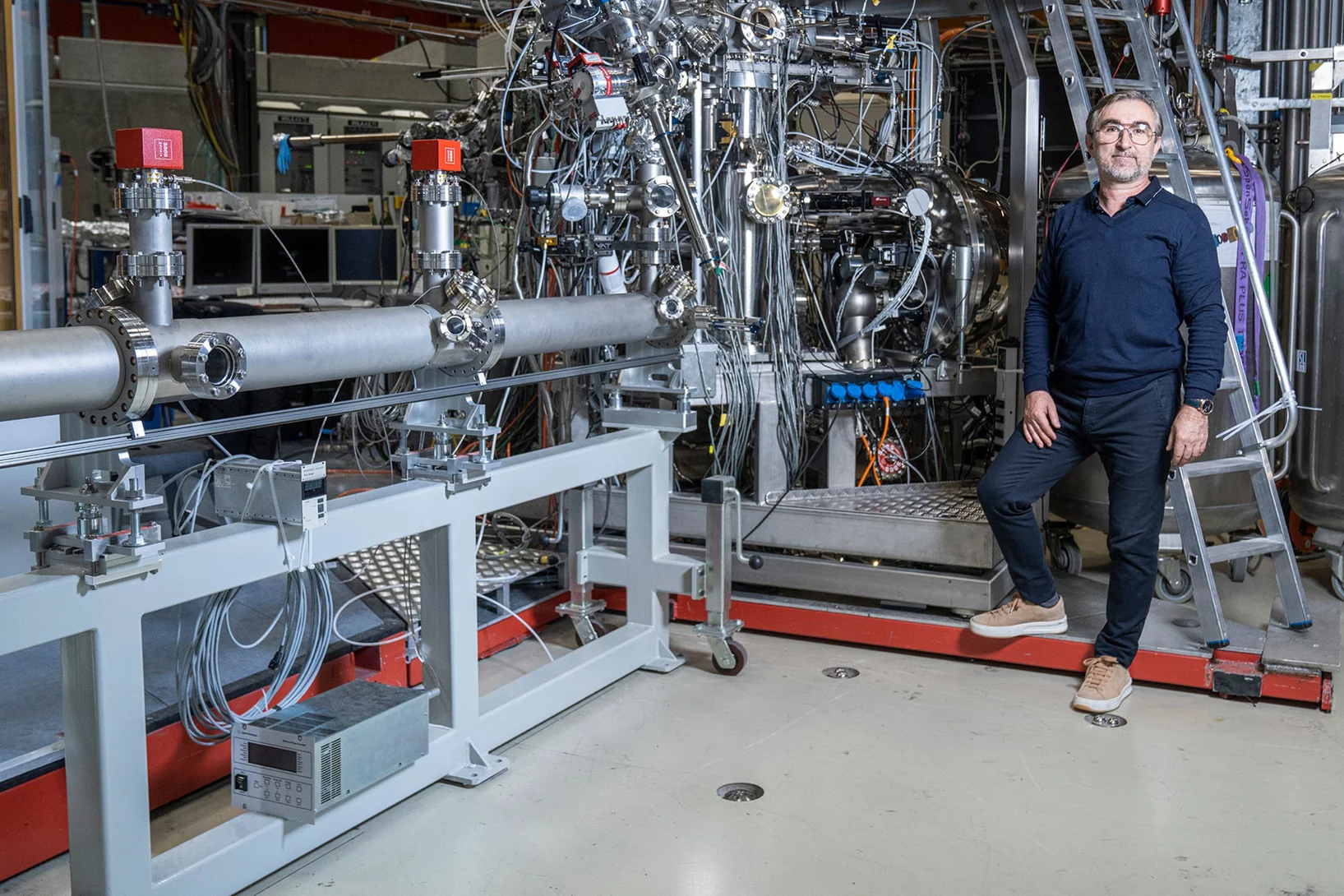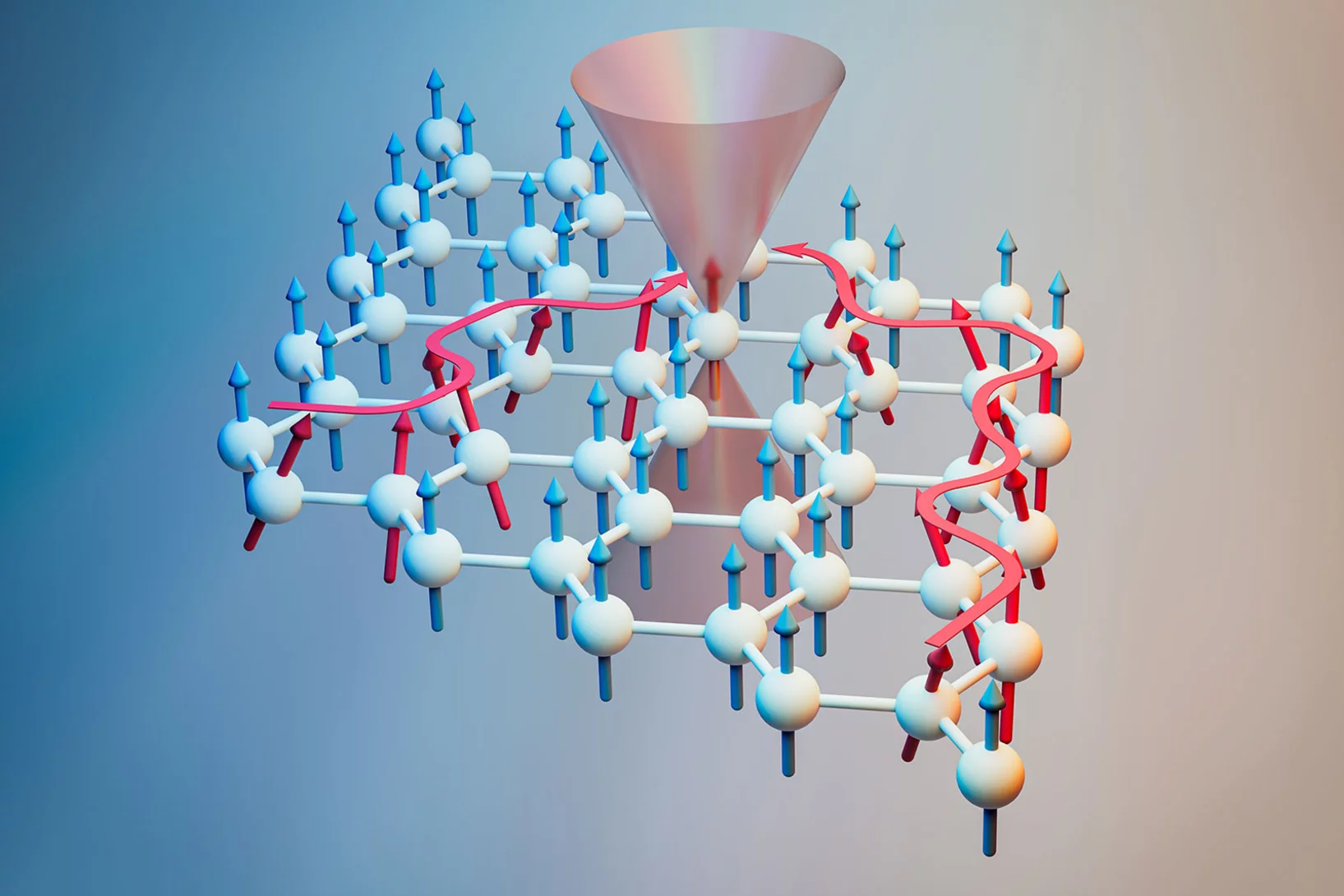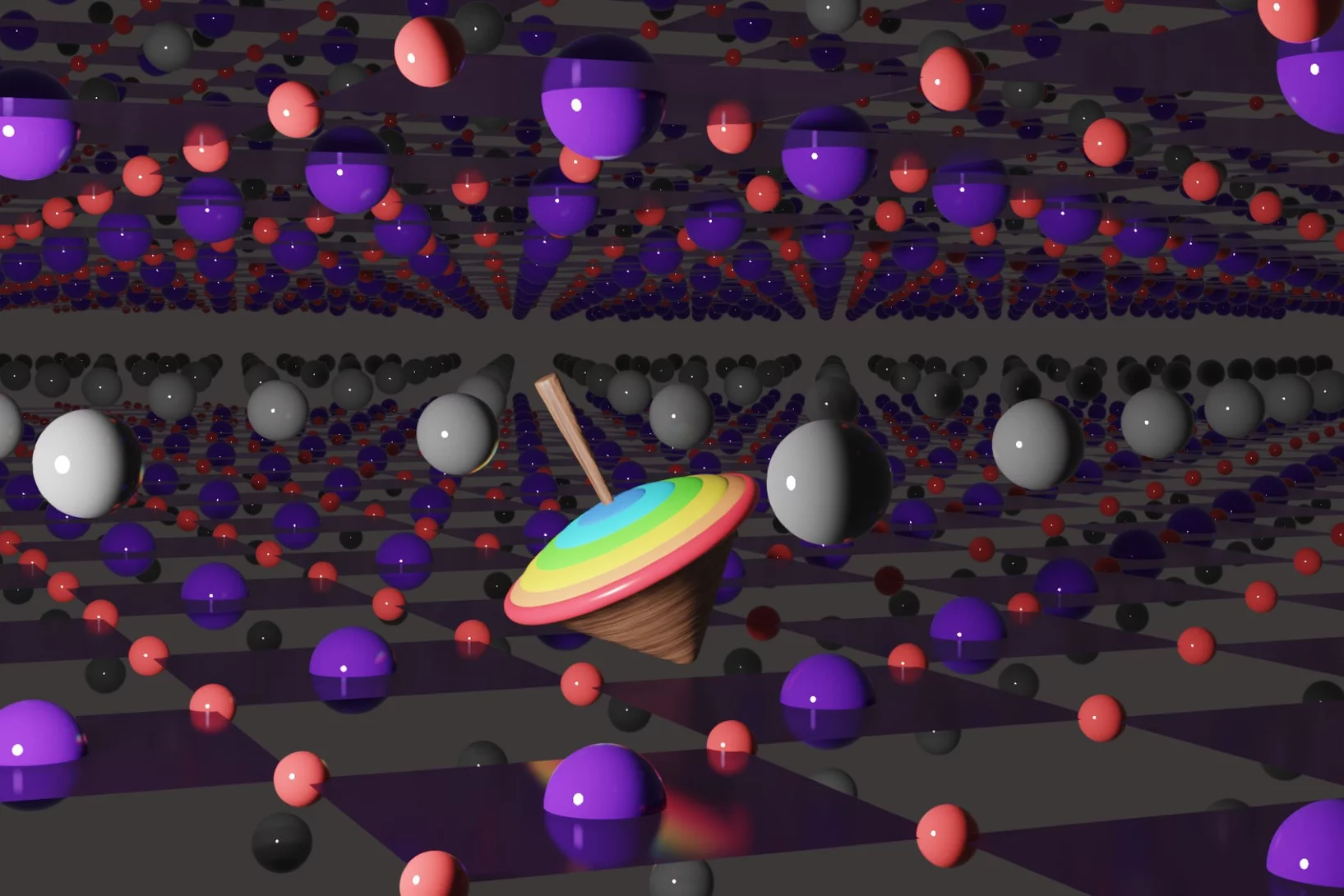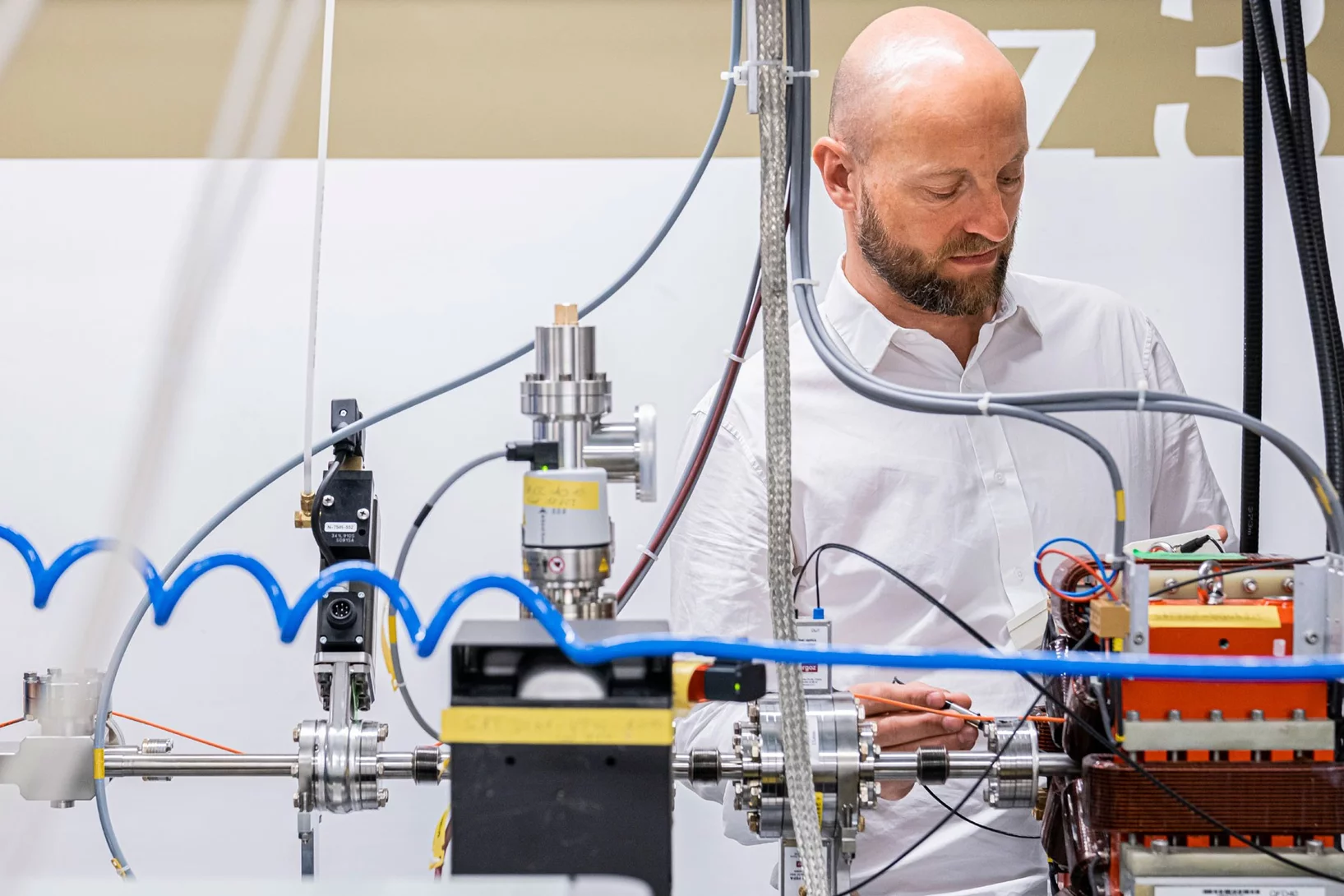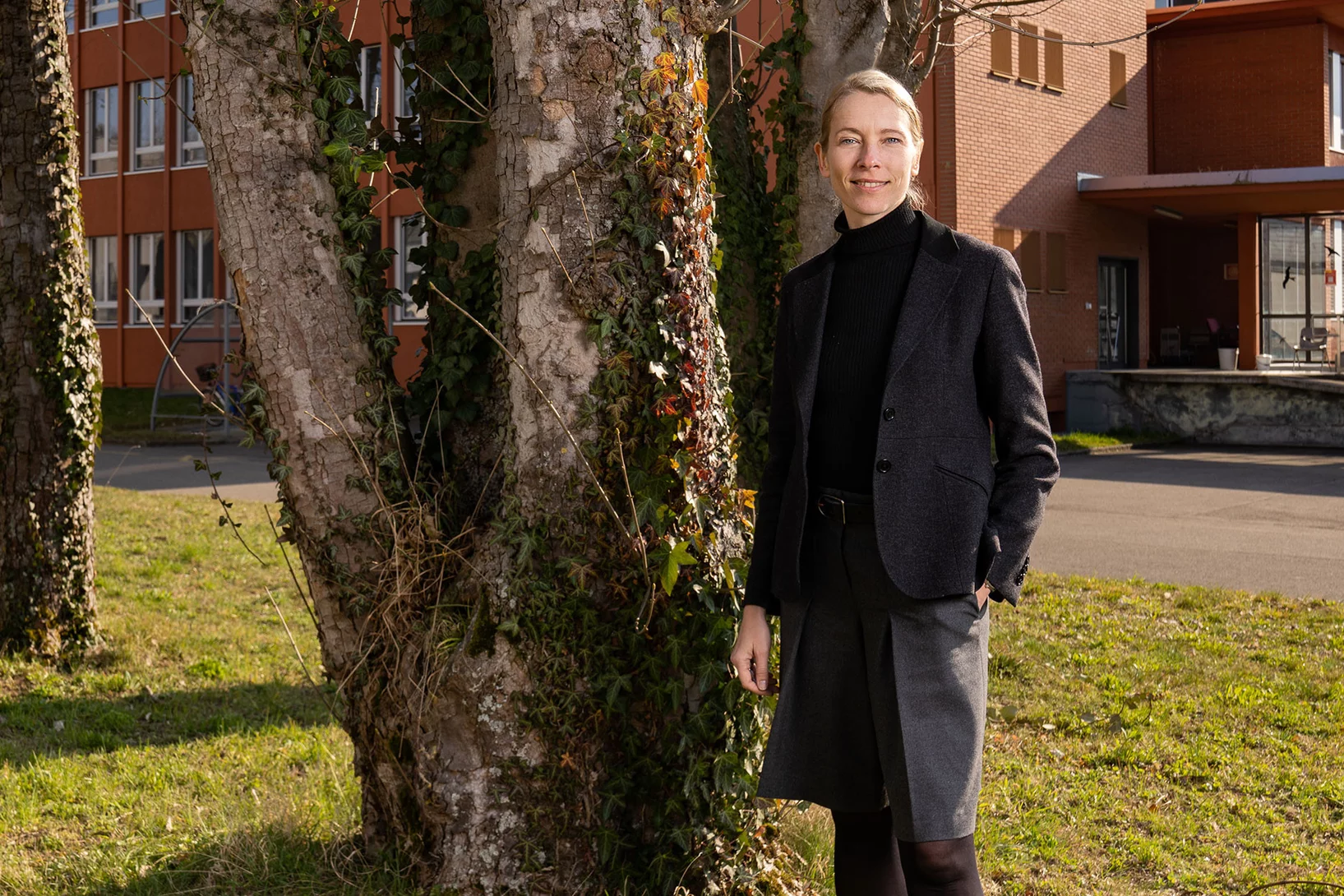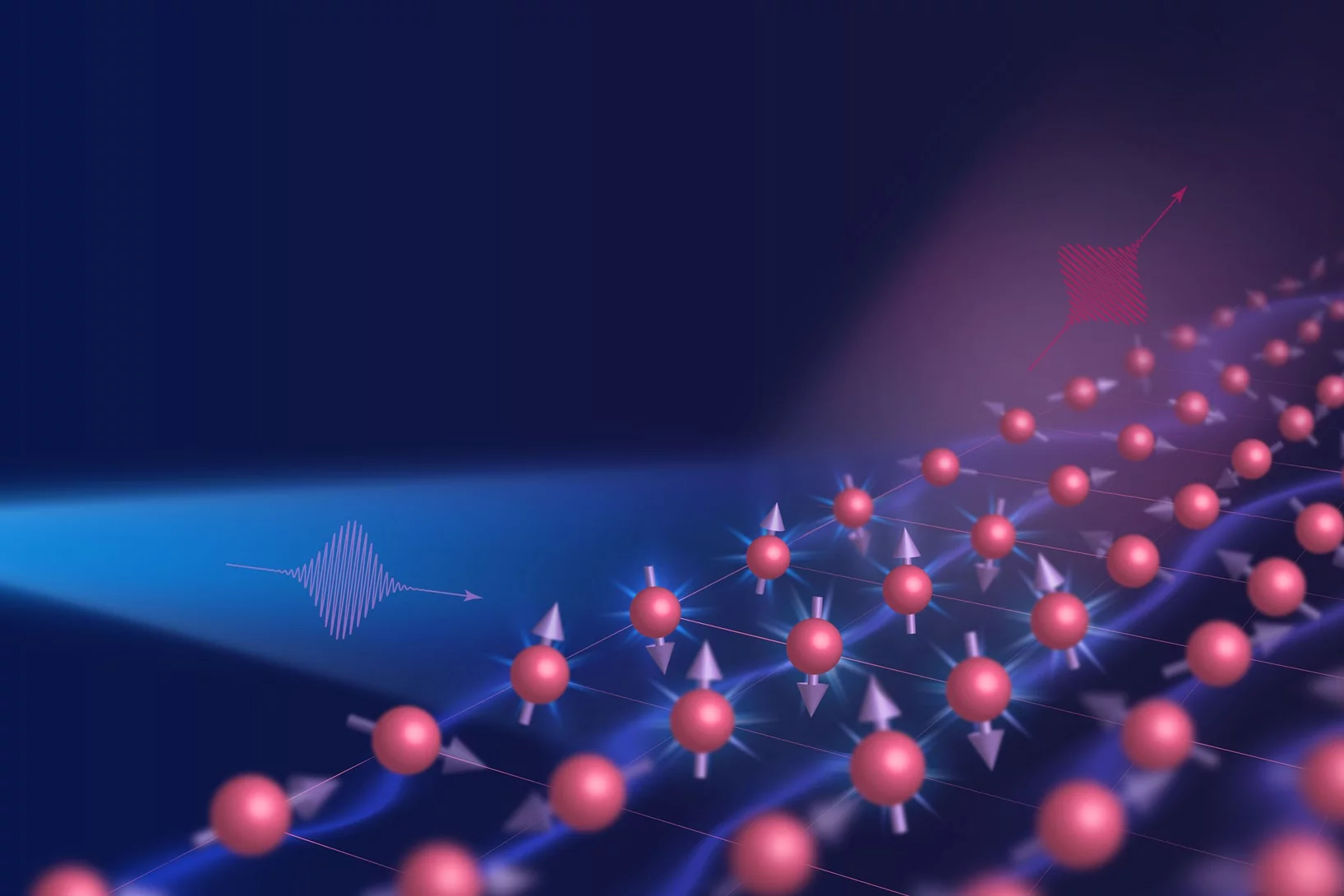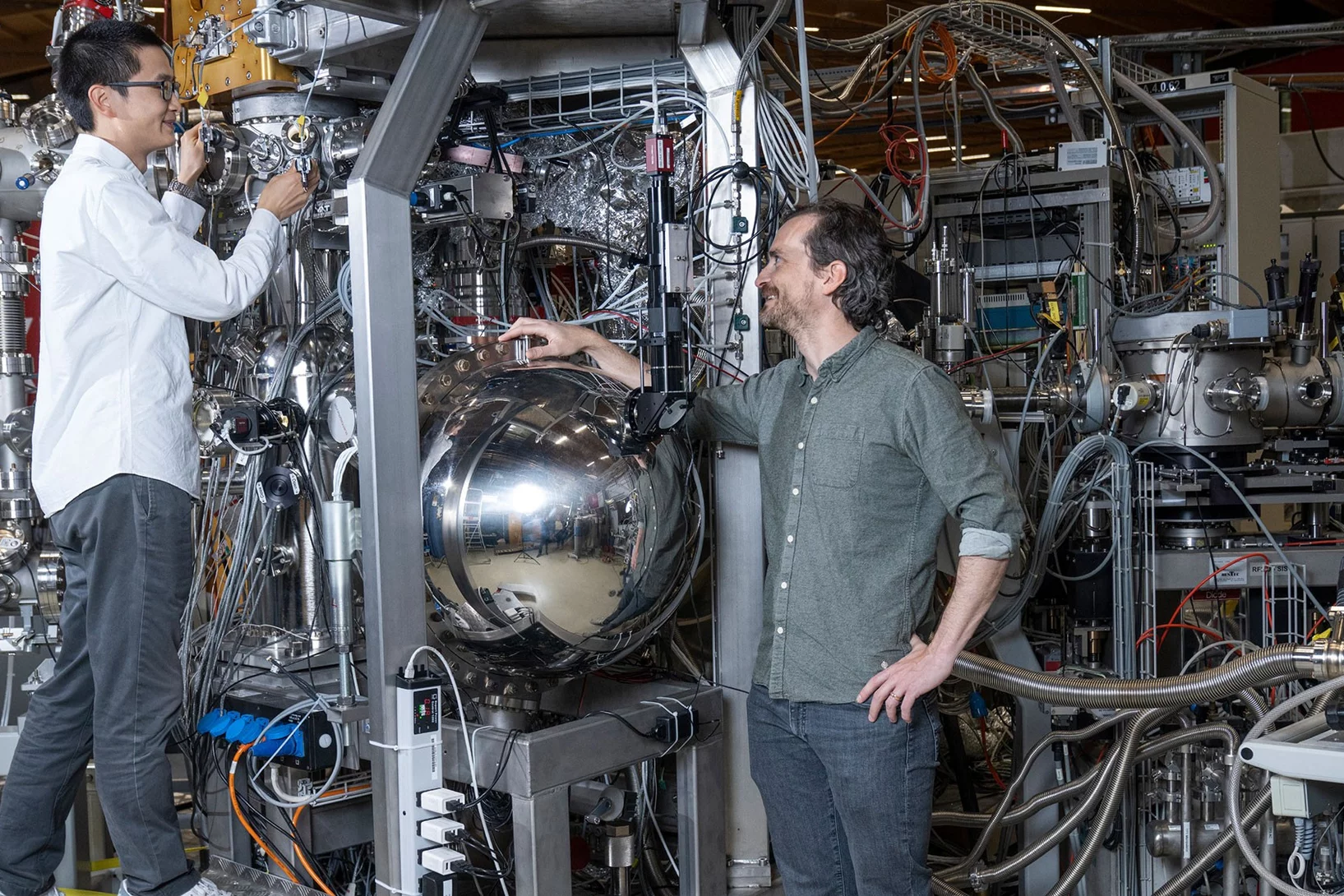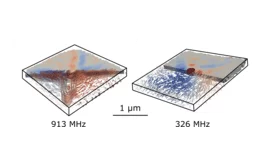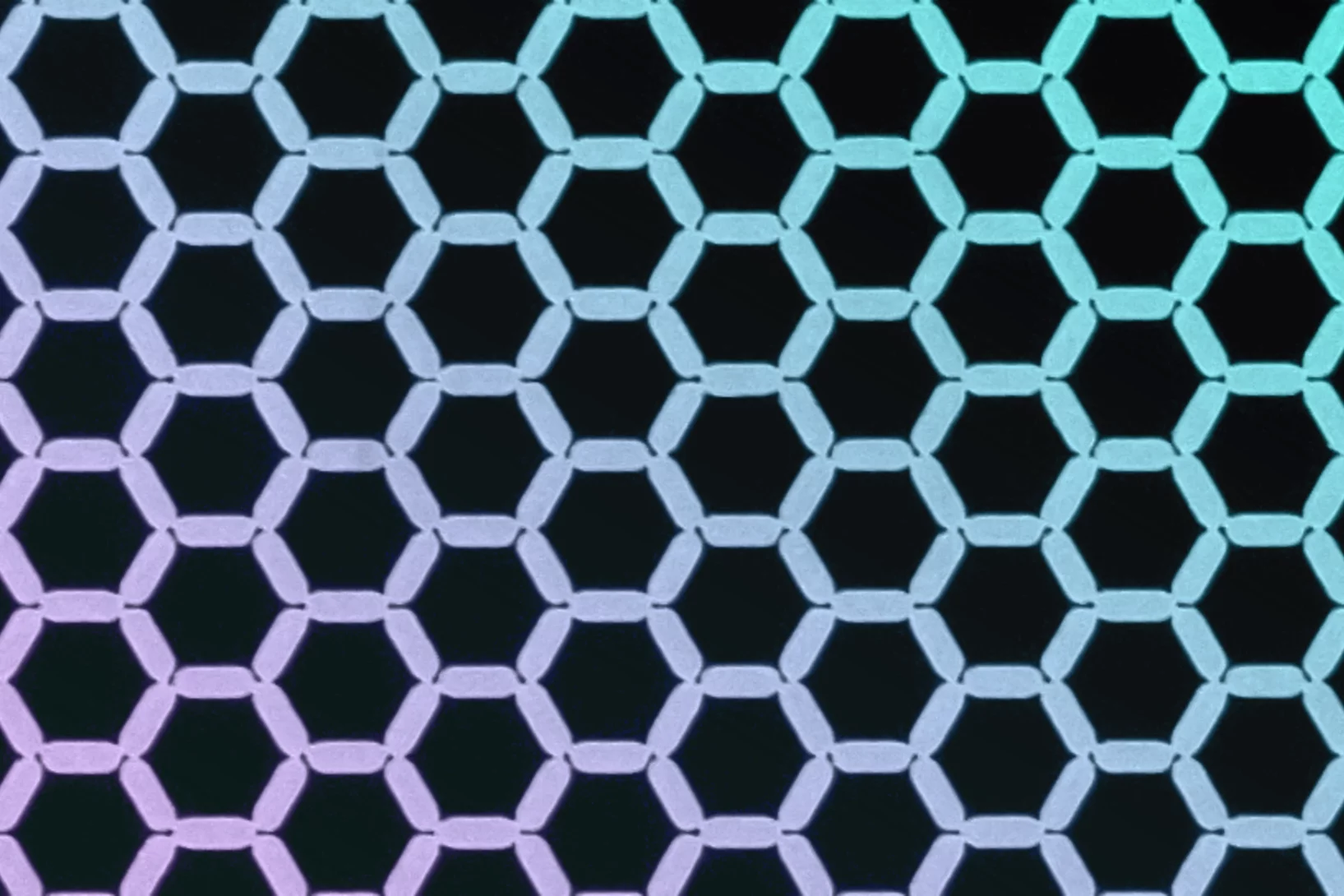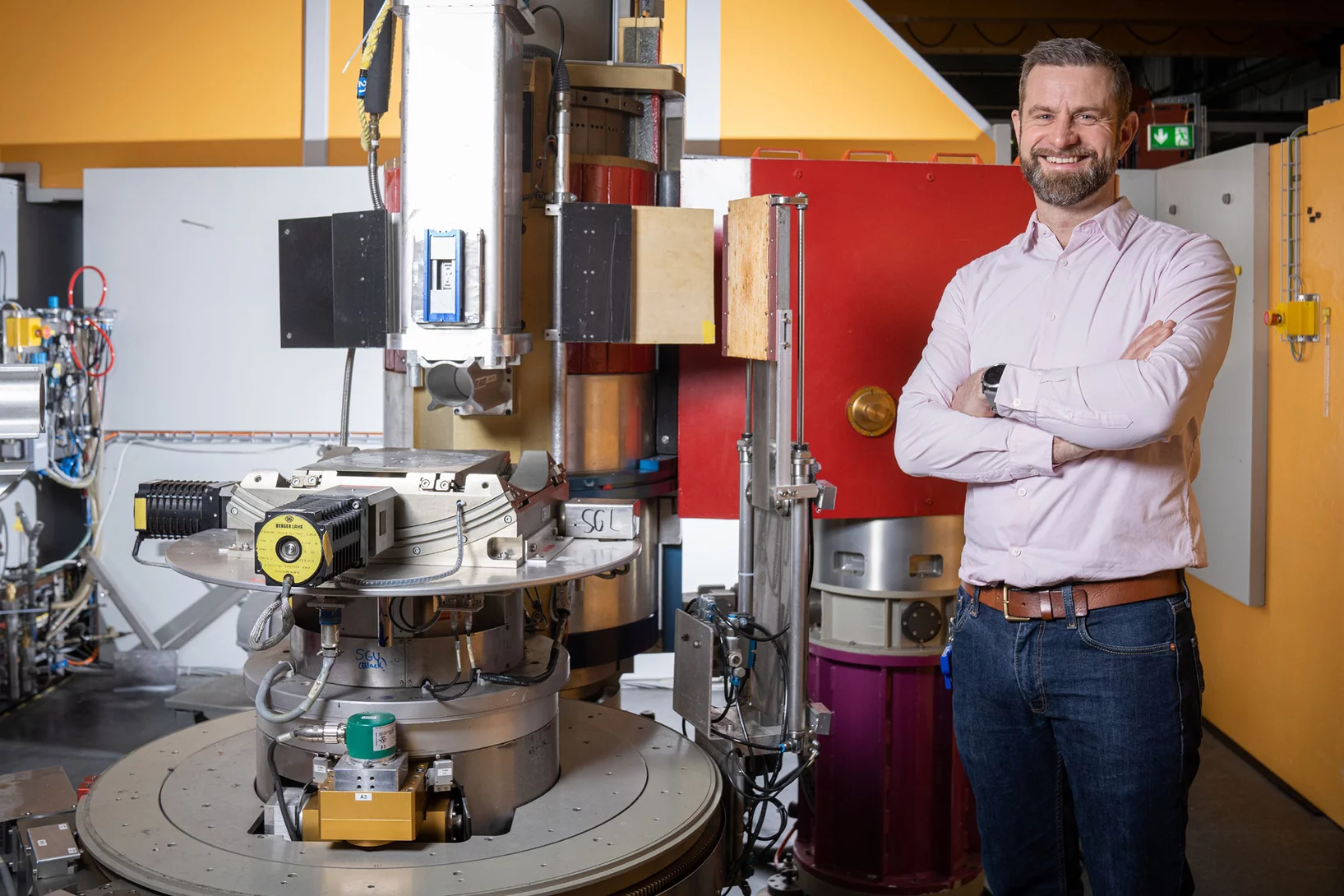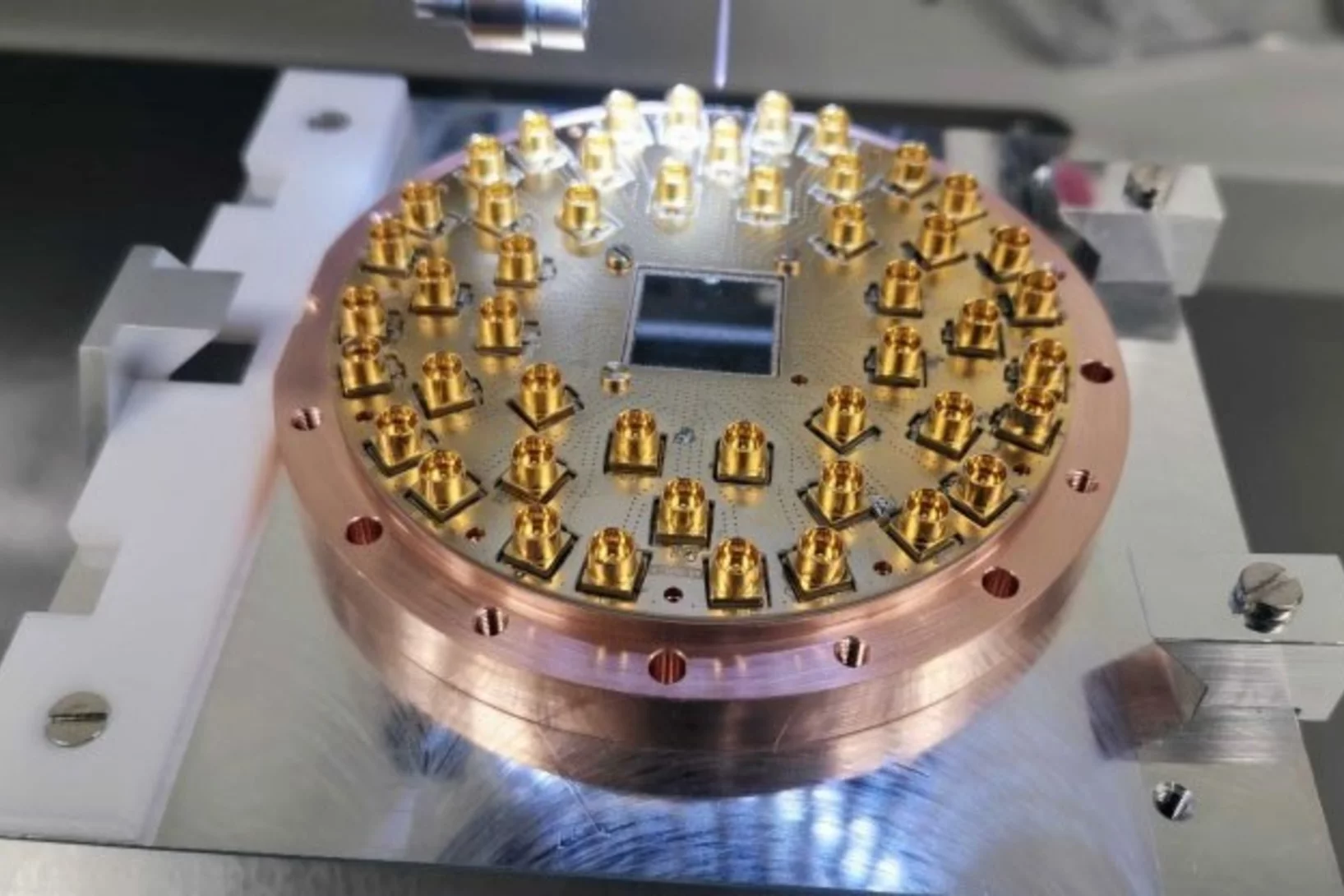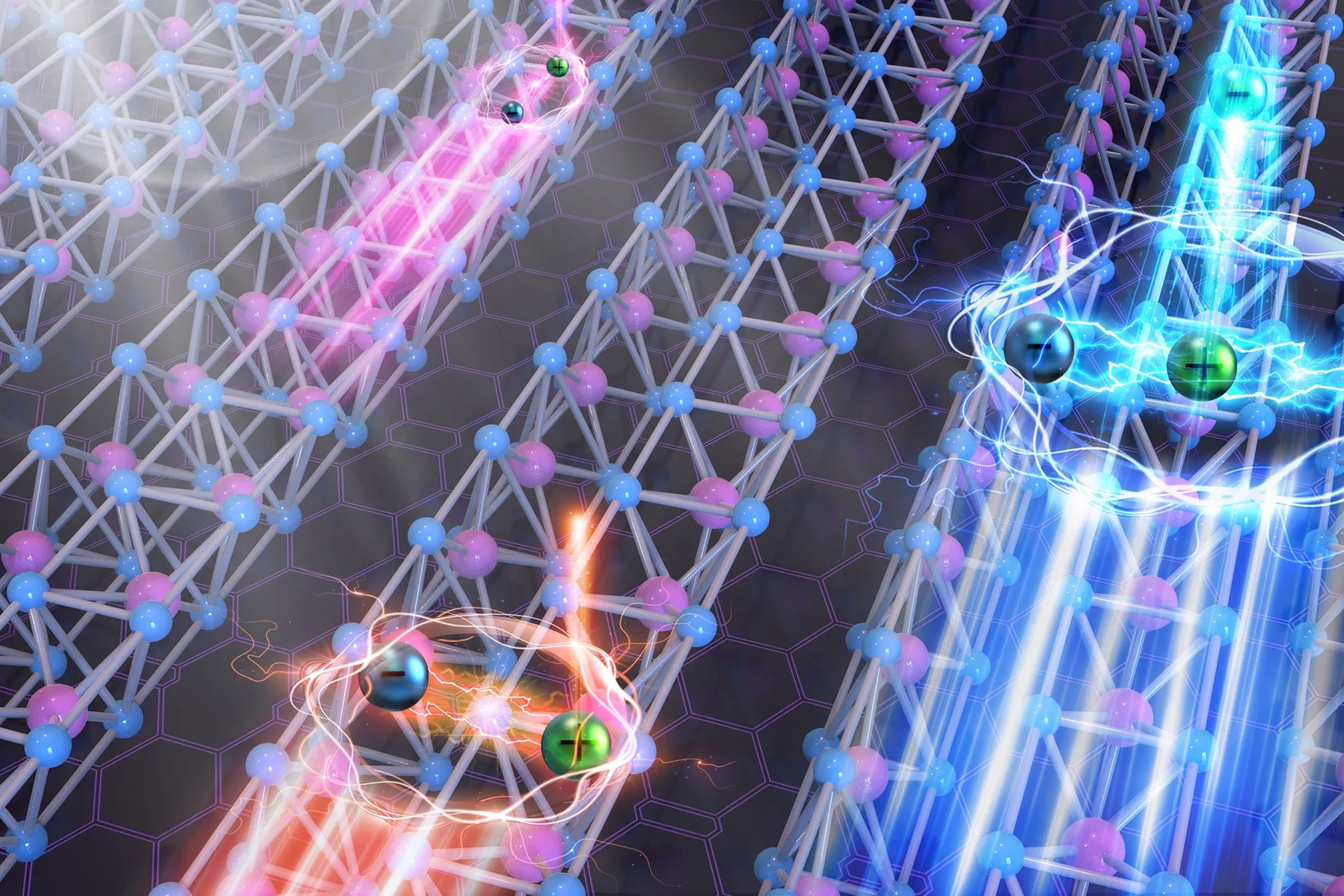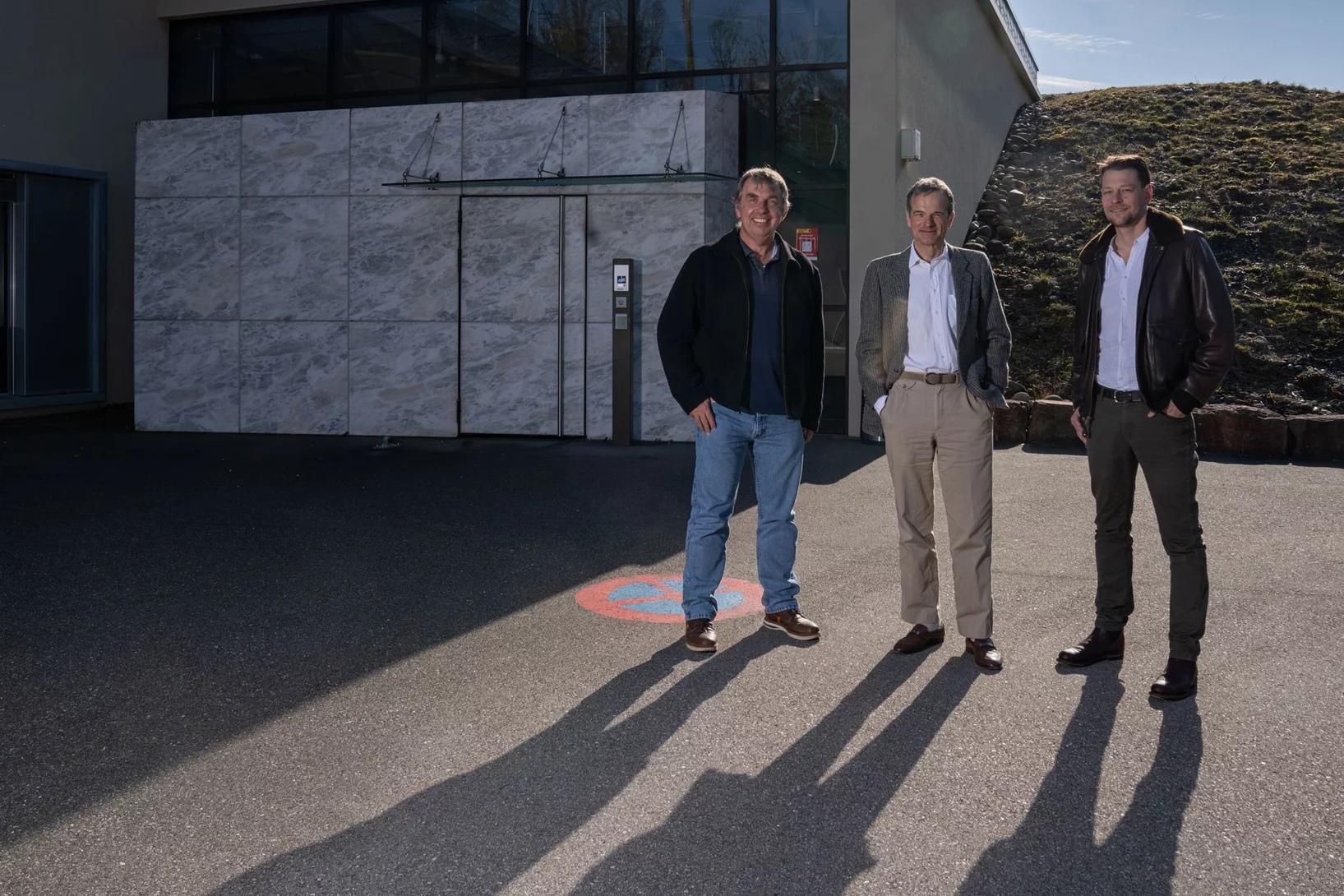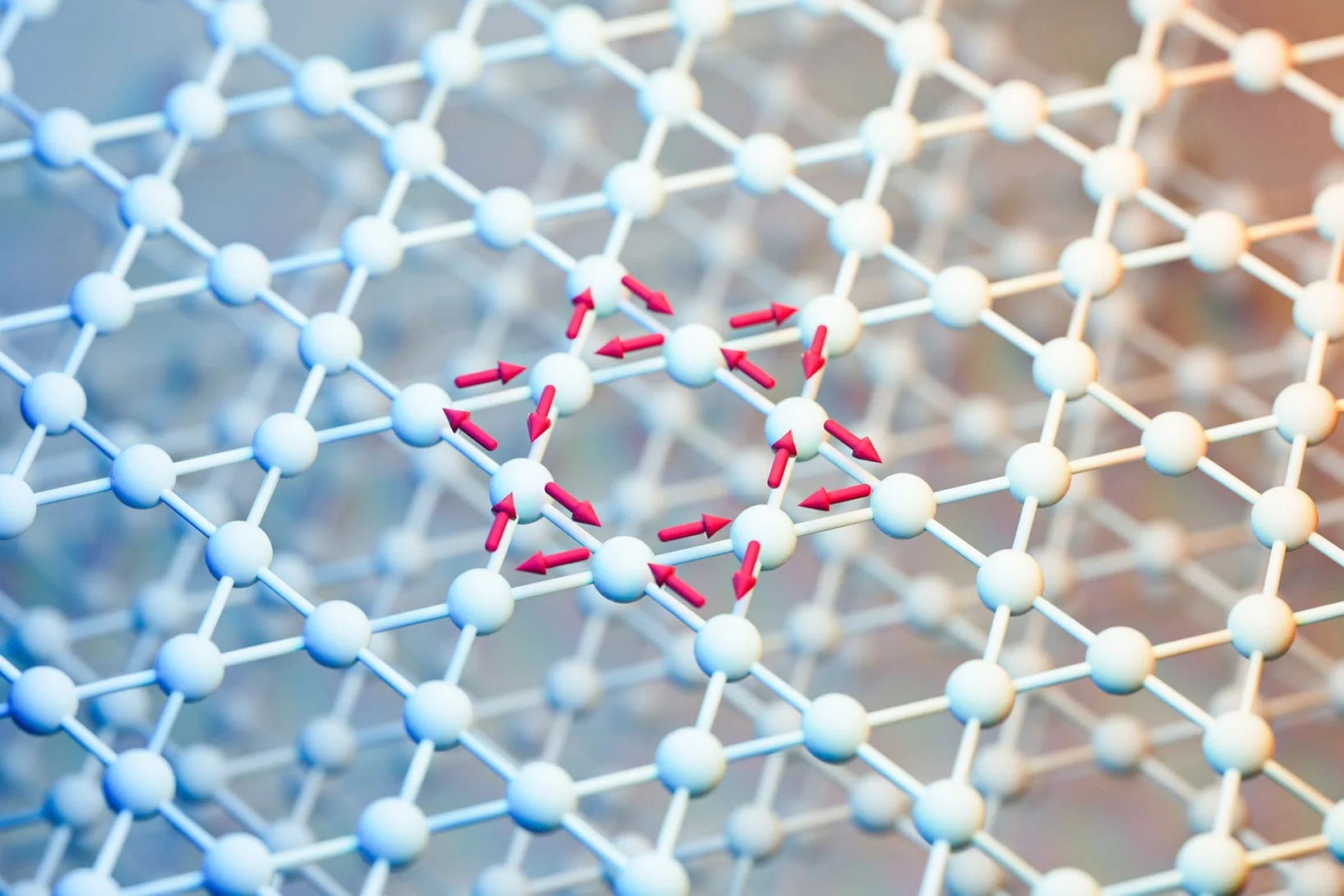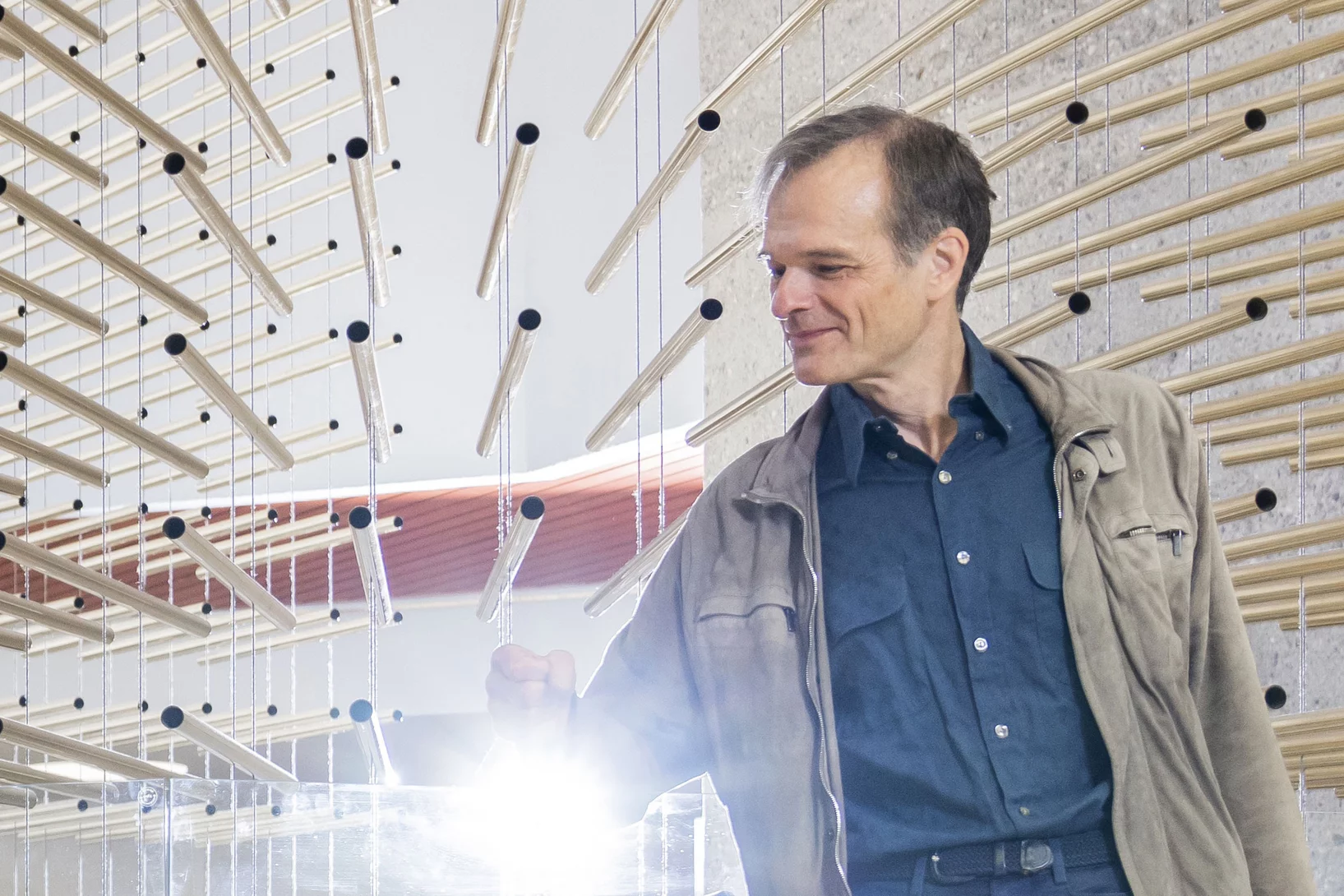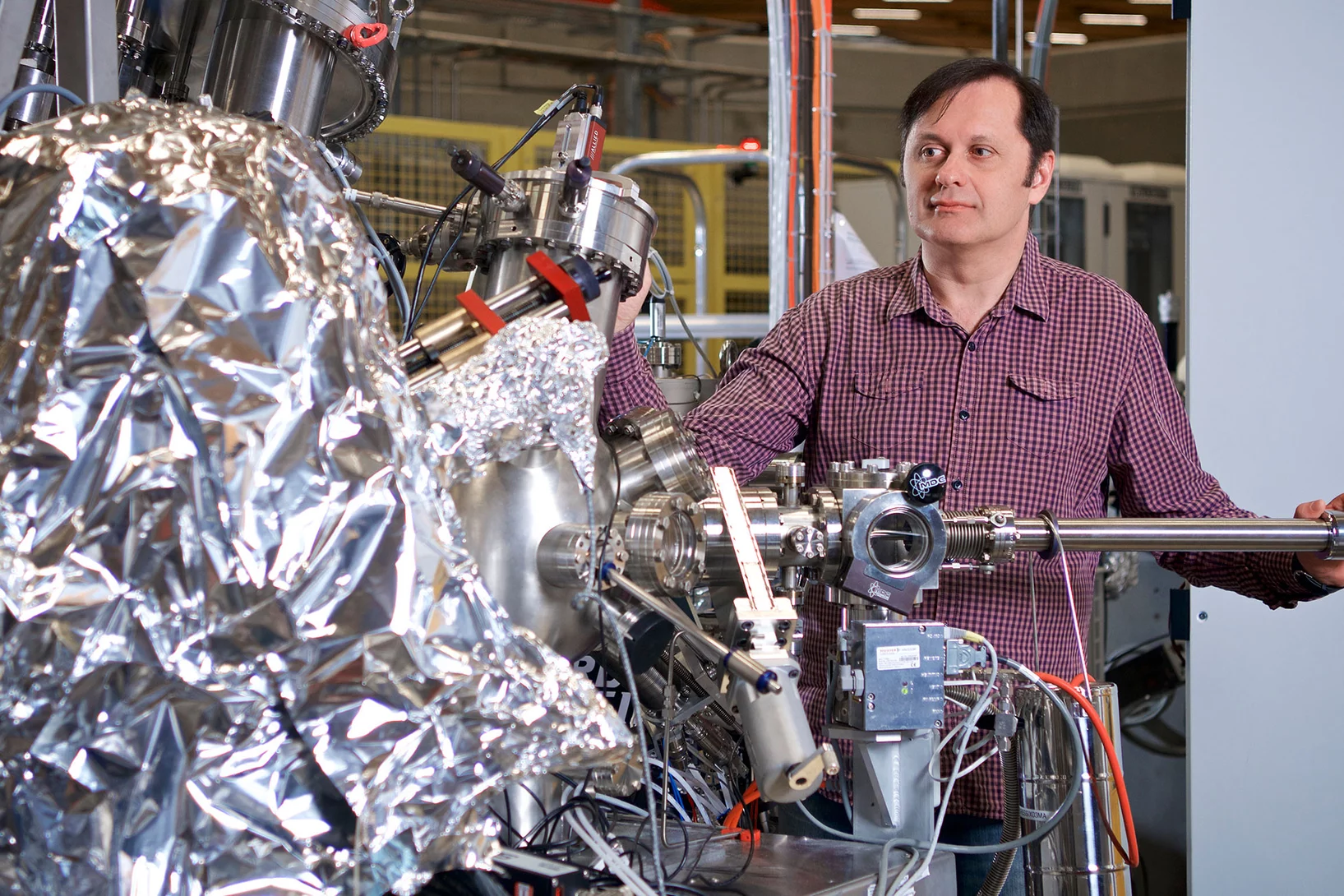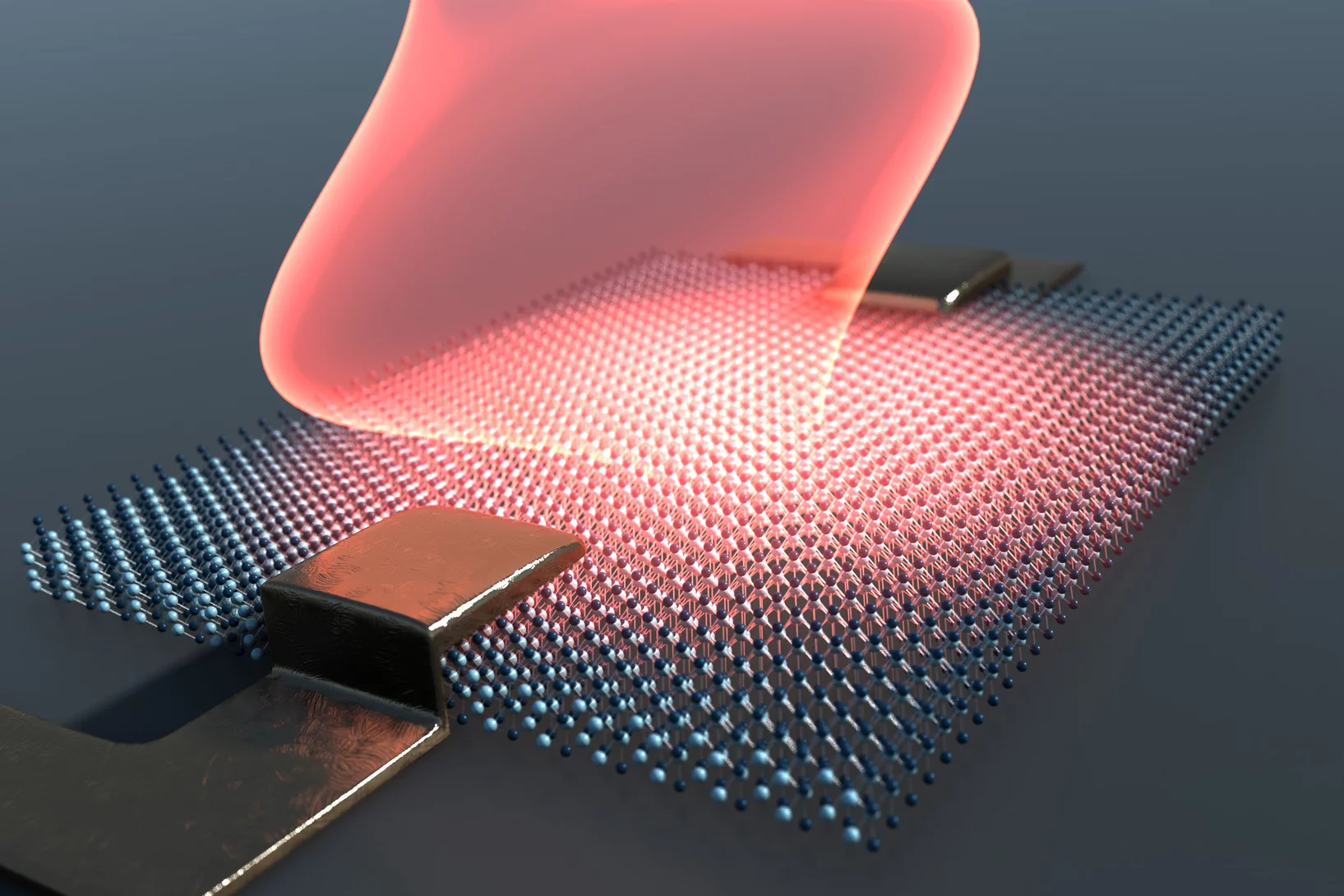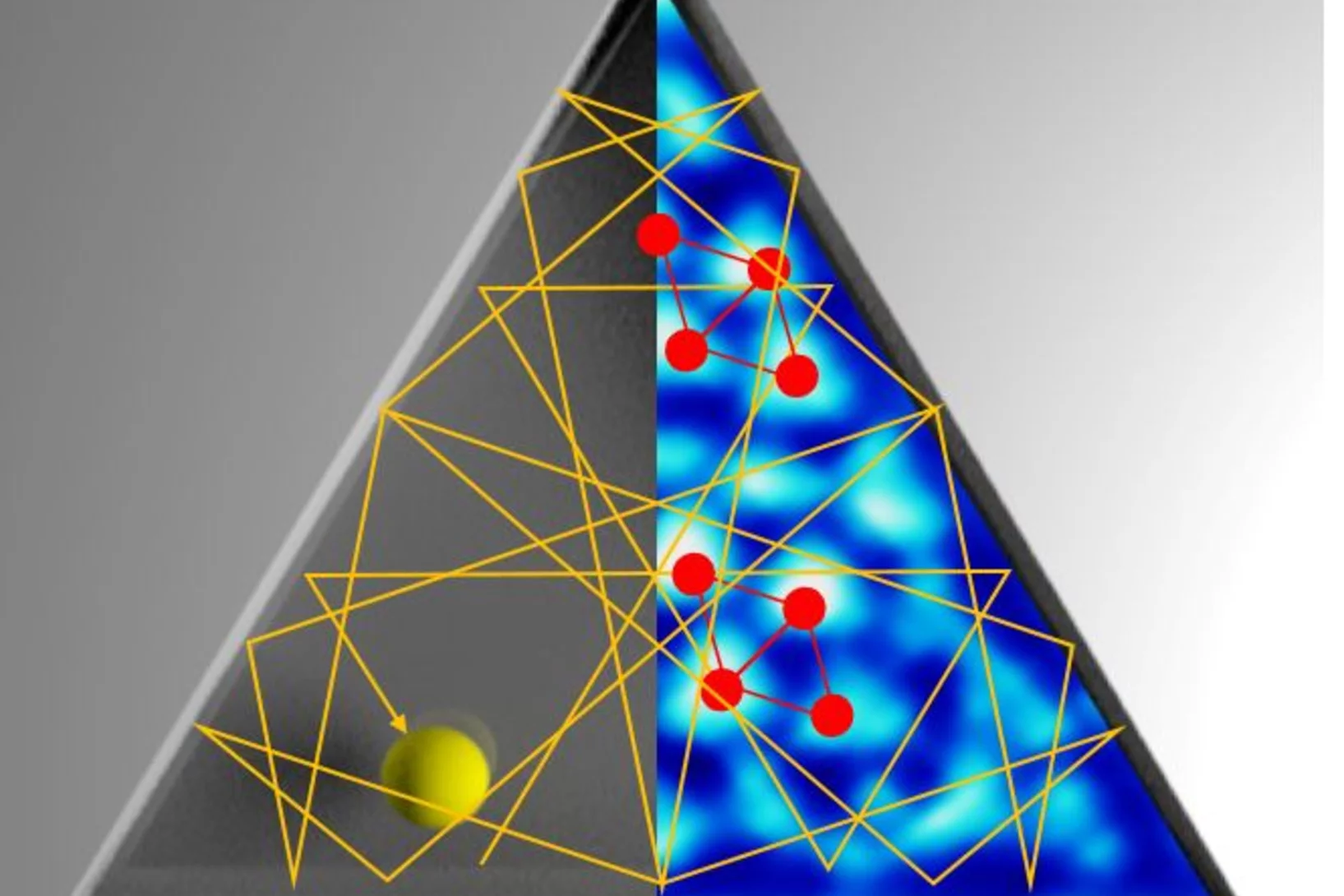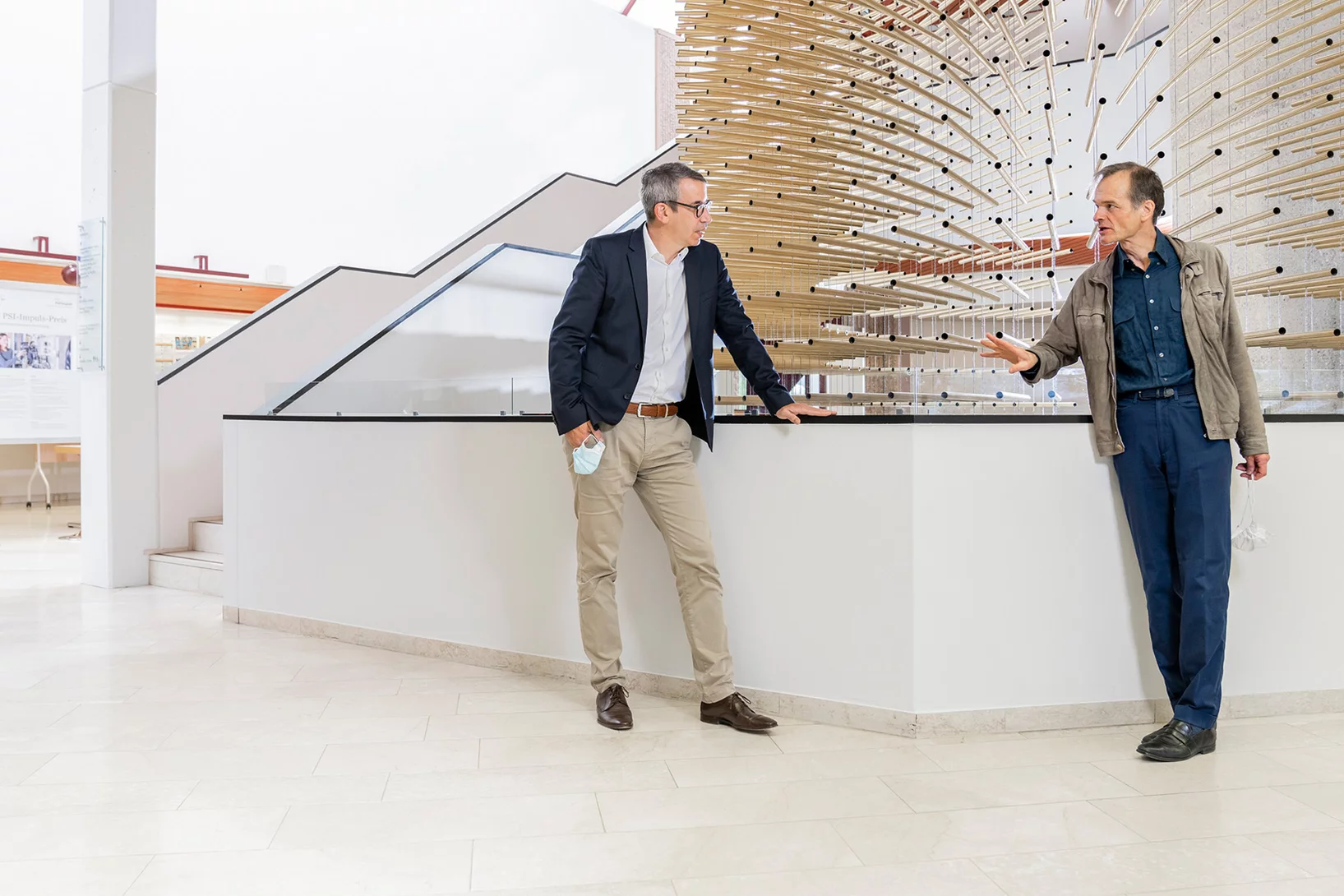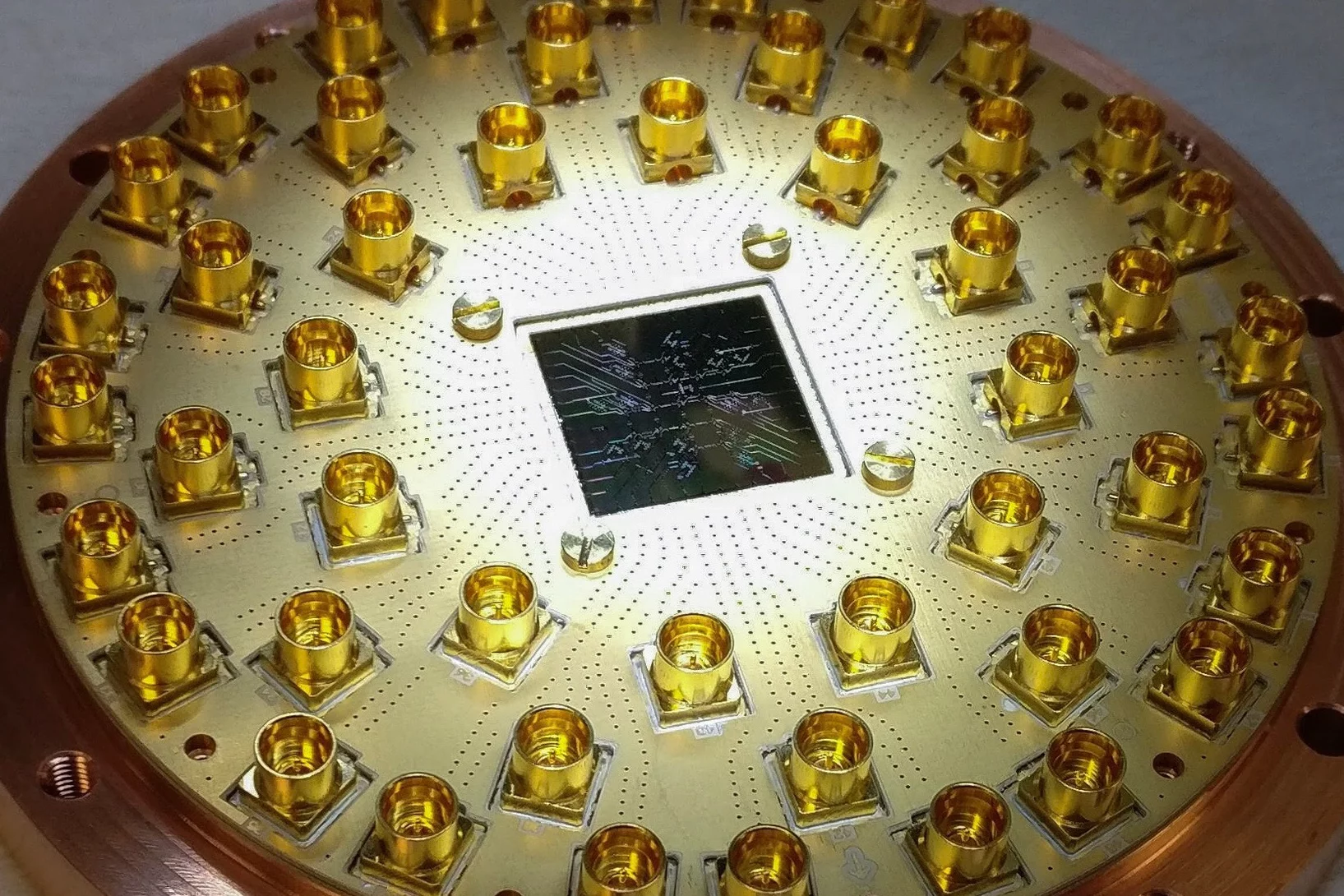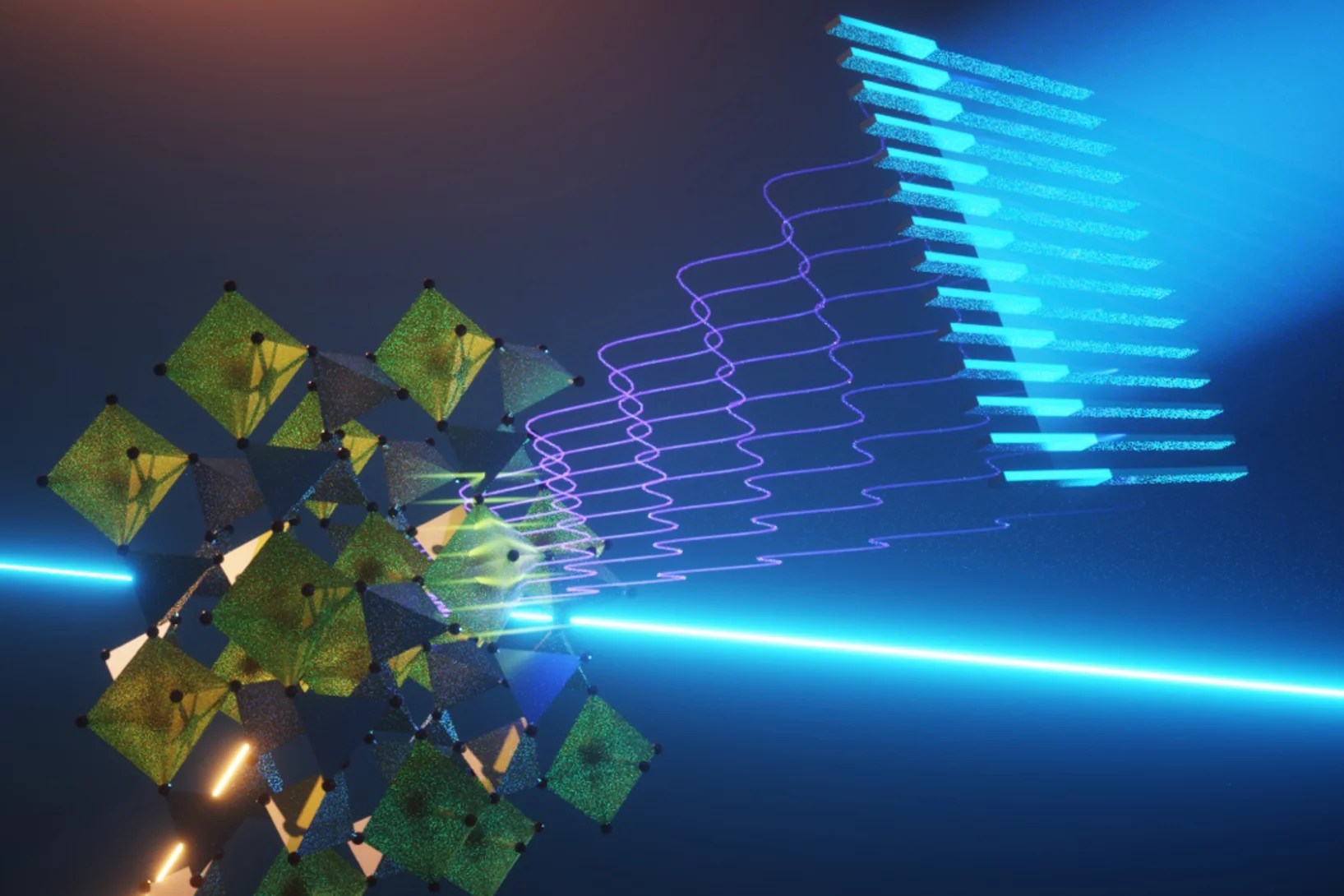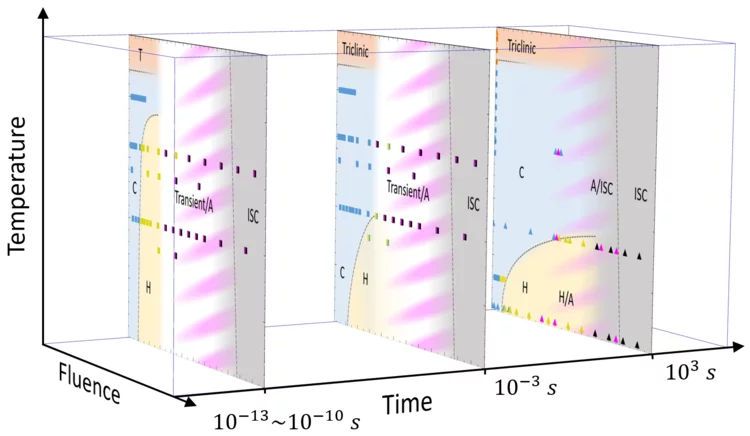Neue Materialien für den Computer der Zukunft
Forschende identifizieren und untersuchen Materialverbindungen, deren spezielle Eigenschaften neuartige Mikrochips möglich machen könnten.
Graphene’s magic in a magnet
Neutron scattering reveals rich magnetic topology in the magnetic equivalent of graphene.
Alexander Grimm wins 2022 Nicholas Kurti prize
We are happy to announce that Alex has been awarded the 2022 Nicholas Kurti Science prize. The prize recognises his work on non-linear effects in Josephson junctions for quantum information processing.
Capturing control errors in quantum annealing
The real-world application of this type of quantum computing gets one step closer with a new method to capture errors while qubits are talking to each other.
Three PSI research facilities reveal magnetic crossover
Insights from the Swiss Muon Source, Swiss Spallation Neutron Source and Swiss Light Source reveal this coveted characteristic in an exotic layered material.
Nickelate superconductors are intrinsically magnetic
Waves of magnetic excitation sweep through this new material whether in superconducting mode or not – another clue to the mystery of loss-less electric currents.
Lösung für das Unlösbare
PSI und ETH Zürich haben den Quantum-Computing-Hub gegründet. Spitzenforschende arbeiten dort gemeinsam an Konzepten für Quantencomputer.
Athos just got even better
An ambitious upgrade at the soft X-ray beamline of the free electron laser SwissFEL opens up new experimental capabilities.
Schneller und smarter
Das PSI bündelt seine Expertise bezüglich der Auswertung von Forschungsdaten im neuen Forschungsbereich Computergestützte Wissenschaften, Theorie und Daten.
«Wenn man in einer gewissen Position ist, sollte man sich nicht verstecken»
Kirsten Moselund leitet das neue Labor für Nano- und Quantentechnologien. Im Interview spricht sie über die Quantenforschung am PSI und wie die Nanophotonik dabei helfen kann.
Spin keeps electrons in line in iron-based superconductor
Electronic nematicity, thought to be an ingredient in high temperature superconductivity, is primarily spin driven in FeSe finds a study in Nature Physics.
Rich electronic features of a kagome superconductor
Spectroscopic insights into the electronic structure of a family of kagome metals bolsters understanding of exotic quantum phenomena
Into the fourth dimension: time-resolved soft X-ray laminography
Combining time-resolved soft X-ray STXM imaging with magnetic laminography, researchers were able to investigate magnetization dynamics in a ferromagnetic microstructure resolved in all three spatial dimensions and in time. Thanks to the possibility of freely selecting the frequency of the excitation applied to the magnetic element, this technique opens the possibility to investigate resonant magneto-dynamical processes, such as e.g. magnetic vortex core gyration and switching, and spinwave emission.
Blick in die magnetische Zukunft
PSI-Forschende beobachten erstmals spezifisches Verhalten von magnetischem Eis.
Wellen auf Kreisbahnen
Energieeffiziente Alternative zur Informationsübertragung mit elektrischem Strom
Superconducting qubit first success at Quantum Computing Hub
Andreas Wallraff talks about moving in, refrigerators and measuring the first superconducting qubit at the ETHZ-PSI Quantum Computing hub.
Mobile excitons as neutral information carriers
These quasiparticles have the potential to revolutionise electronics - if they can move. Mobile excitons have now been observed for the first time in a metal.
Opening the door to X-ray quantum optics
The 'perfect' X-ray beam-splitter: Researchers at SwissFEL have an ingenious solution to produce coherent copies of pulses, facilitating a realm of new X-ray techniques.
New insight into unconventional superconductivity
Signatures for a novel electronic phase that enables charge to flow spontaneously in loops have been observed in a kagome superconductor. The findings are published today in Nature.
Mit Topologie zu kompakteren Quantencomputern
Auf dem Weg zu besonders stabilen Quantenbits haben Forschende die Elektronenverteilung in zwei Halbleitern genau untersucht.
Millionenförderung für Hirn- und Quantenforschung
Der Europäische Forschungsrat bewilligt PSI-Projekte zur Entwicklung eines Quantencomputers und zur Hirnforschung in Höhe von 5 Millionen Euro.
Halbleiter erreichen die Quantenwelt
Mit einem Supraleiter aufgemotzt: Die Halbleitertechnologie könnte eine neue Wendung erhalten, indem Quanteneffekte in Supraleitern ausgenutzt werden.
Ultraschnelle Kontrolle von Quantenmaterialien
Mit Licht die Eigenschaften von Festkörpern grundlegend verändern
Das Praktische im Aussergewöhnlichen
Niels Schröter erhält einen Preis der Schweizerischen Physikalischen Gesellschaft SPG.
Quantum billiards with correlated electrons
Our collaborators at the Jozef Stefan Institute – the leading author, Jan Ravnik, is now a PSI Fellow at LMN – report a study of the electron ordering in equilateral triangle structures via photoexcitation of the prototypical dichalcogenide 1T-TaS2.
«Ziel ist ein experimenteller Quantencomputer im Kanton Aargau»
Die ETH Zürich und das PSI eröffnen gemeinsam einen «Quantum Computing Hub». Ein Interview mit Gabriel Aeppli und Christian Rüegg über das neue Forschungszentrum.
ETH Zürich und PSI gründen Quantum Computing Hub
Die ETH Zürich und das Paul Scherrer Institut PSI eröffnen ein gemeinsames Zentrum zur Entwicklung von Quantencomputern. Ziel ist es, die Realisierung von Quantencomputern sowohl auf Basis von Ionenfallen als auch von supraleitenden Bauteilen voranzutreiben.
Einmalig scharfer Röntgenblick
Ein neues Verfahren des PSI erlaubt die quantenphysikalische Erforschung von Materialien mithilfe von Röntgenlasern.
A time-domain phase diagram of metastable quantum states
Our collaborators at the Jozef Stefan Institute – the leading author, Jan Ravnik, is now a PSI Fellow at LMN – report a ‘dynamical’ phase diagram of metastable quantum states generated via photoexcitation of the prototypical dichalcogenide material 1T-TaS2.
Was Wasser mit Quantenmagneten gemein hat
Bei hohem Druck verschmelzen flüssiges Wasser und Wasserdampf – die Phasengrenze verschwindet. Forschende haben jetzt ein ähnliches Verhalten in einem Quantenmagneten entdeckt.
